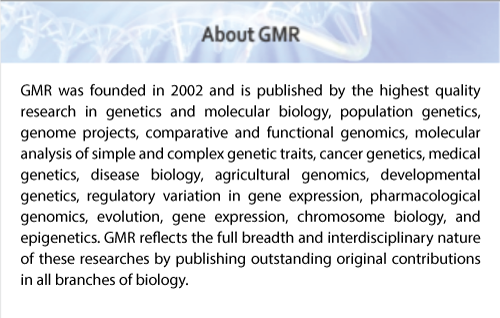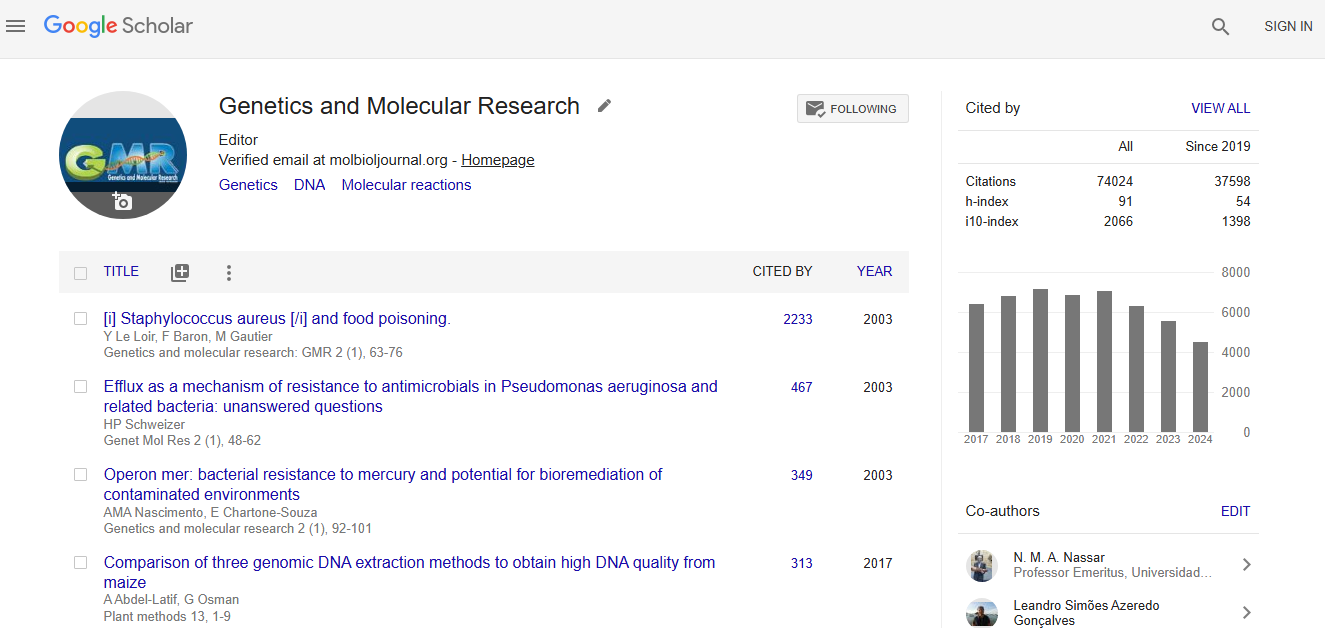Abstract
Lack of an association between a single nucleotide polymorphism in the bovine myogenic determination 1 (MyoD1) gene and meat quality traits in indigenous Chinese cattle breeds
Author(s): J.A. Ujan, L.S. Zan, H.B. Wang, S.A. Ujan, C. Adoligbe, H.C. Wang and S.F. BiaoThe myogenic determination 1 (MyoD1) gene is a member of the MyoD gene family. It encodes for skeletal muscle-specific transcription factors containing highly conserved basic helix-loop-helix regions that perform important roles in the initiation, maintenance, and regulation of phenotypic traits. We investigated a new single nucleotide polymorphism (SNP) in the MyoD1 gene to evaluate whether this polymorphism affects meat quality traits in five Chinese indigenous cattle breeds, namely Qinchuan (QC), Xia-Nan (XN), Nan-yang (NY), Luxi (LX), and Jia-xian red (JXR). A C→G transversion at position 624 was detected in exon 1 of the MyoD1 gene; it causes an amino acid substitution (624serine/624cysteine). Least squares analysis showed that this SNP is not significantly associated with back fat thickness, eye muscle area, intramuscular fat, or marbling. The A/B allelic frequencies in the five breeds were 0.810/0.189, 0.779/0.220, 0.768/0.231, 0.820/0.180, and 0.801/0.198, respectively. Based on the χ2 test, the genotype distributions of four cattle breeds (LX, NY, QC, and XN) did not agree with Hardy-Weinberg equilibrium (P < 0.05); one breed (JXR) did not deviate significantly from Hardy-Weinberg equilibrium (P > 0.05). The genotypic frequencies among all five cattle breeds showed moderate diversity (0.25 < polymorphism information content < 0.5). We concluded that the C624G SNP of the MyoD1 gene does not influence meat quality traits in indigenous Chinese cattle breeds; however, this SNP could be included in breed composition and population admixture analyses due to the marked differences in allelic frequencies among these five breeds.
Impact Factor an Index

Google scholar citation report
Citations : 74024
Genetics and Molecular Research received 74024 citations as per google scholar report
